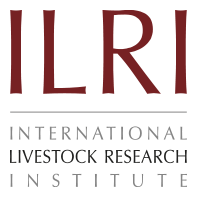Min
Ecological condition: Min Pig is mainly found in Liaoning, Jilin, Heilongjiang provinces and Inner Mongolia region with a few in Hebei province. The distributing area spans Yanshan Mountain to the Heilong River lakefront, Inner Mongolia grassland to Songliao plain.
It is one of the important pig breeds of North China Type. The locations in which Min pig lives have cold weather. The management levels is also high. Following many generations of natural and artificial selection, Min pig has developed higher cold resistance than other breeds. According to classification of pig breeds in China, Min pig was classified as North China type (Zhang et al, 1986).
Appearance characteristics: Min Pig has medium-size head, straight and long face, big drooping ears and 7-8 pairs of teats. Its body is flat and smooth, with a narrow back and waist. Its hips are tilted and has strong limbs. It has black dense and long hair on the back and has much more bristles.
Productive performance: Min pig sexually matures early. Its first oestrum appears at the age of 4 months. At 9 months , the average ovulation number is 14.86. Oestrus symptoms of sow are well prononced, and fecundity is high. Min pig's reproduction performance is better than the other pig breeds but less than that of the Taihu Pig.
Table 1: The litter size of Min and Taihu pigs
|
Parities Breeds |
1 |
2 |
3 |
|
Min |
11.04 |
11.48 |
11.93 |
|
Taihu |
12.14 |
14.48 |
15.83 |
Min pig has high lean meat percentage. When it reaches to carcass weight of 60kg, 90kg and 120kg, the lean meat percentage is about 53.29%, 46.13%, 39.14%, and its fat percentage rate is about 24.14%, 35.88% and 45.38%, respectively.
1. Crossbreeding programmes: When Min pig is used as a dam line and mated with Large White, Landrace, Soviet White, Berkshire, Northeast Spotted and Harbin white sires, the average daily gain of crossbred offsprings were 560A1A2544A1A2499A1A2526 and 575g, respectively. when used as a sire line and mated to west-north black and blue, Habai, Landrace and XinJin Pig dams, the average daily gain of crossbred offsprings were 615A1A2642A1A2555 and 531g, respectively.
Used as a dam in a three breed terminal crossbreeding scheme, the average dairy gain of the three breed crossbred offspring was higher than that of two breed crossbred offspring.
Evaluation of the genetic diversity: Zhan et al (1989) studied the silver staining nucleolus organizer region (Ag-NOR) and evolutionary relationships in the breeds of domestic pigs, the average number of the Ag-NOR was 1.99 in the tested cells of Min breed and the cluster analyses results showed that Min breed had large genetic distance with other Chinese indigenous pig breeds, but had close relationship with the breeds of European origin.
Mo et al (2003) studied the polymorphism of the Min breed with eight serum protein loci Ab, Pi-I, Pi-II, Po-I, Po-II, Cp, Amy-I and CA by the vertical polyacrylamide gel electrophoresis. All of these markers were polymorphic and the mean number of all effective loci was 1.858, the polymorphic information content was 0.295, the observed and expected heterozygosity was 0.425 and 0.360.
Yang S. L. et al (2003) studied the genetic variation of Min breed with a set of 27 microsatellite markers recommended by the Food and Agriculture Organization of the United Nations and International Society of Animal Genetics (FAO-ISGA), which showed that all of these markers were polymorphic, the smallest and largest number of alleles in one locus were four (SW240) and the twenty-two (S0068), respectively, the mean number of the observed and effective alleles were 12.92 and 7.27, and the observed and expected heterozygosity were 0.828 and 0.464. The clustered results implied that the Min breed had the shortest genetic distance with the breeds of the Southwest China type, which was not consistent with the phenotypic and geographical classification. Yang J. et al (2003) presented the genetic diversity with the near-complete mtDNA genome of 17 breeds of indigenous Chinese pigs, there were 267 polymorphic loci in the tested regions.
Reference
1. Mo D. L., B. Liu and Z. G. Wang et al, Genetic variation and genetic relationship of seventeen Chinese indigenous pig breeds using ten serum protein loci, Asian-Australasian Jorunal of Animal Science 2003, Vol. 16 (7) 939-945.
2. Yang J., J. Wang and J. Kijas et al., Genetic diversity present within the near-complete mtDNA genome of 17 breeds of indigenous Chinese pigs, 2003, 94(5) 381-385.
3. Yang S.L, Z.G. Wang and B. Liu et al, Genetic variation and relationship of eighteen Chinese indigenous pig breeds, Genet. Sel. Evol. 2003, 35: 657-671.
4. Zhan T.S, Z.F. Yuan and W.S. Liu, Silver staining nucleolus organizer regine (Ag-NOR) and evolutionary relationships in the breeds of domestic pigs, Acta Veterinaria et Zootechnica Sinica, 1989, 20 (1) 1-6.
5. Zhang Z.G., B. T. Li, X. H. Chen et al, Pig Breeds in China. Shanghai Scientific and Technical Publishers. 1986.pp25-29.






